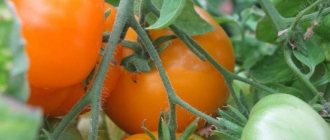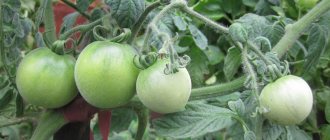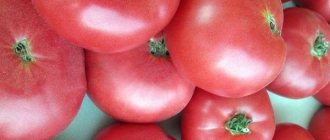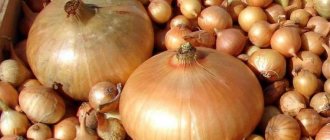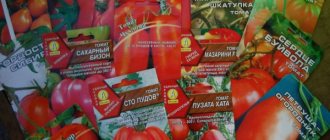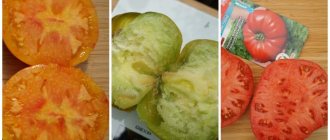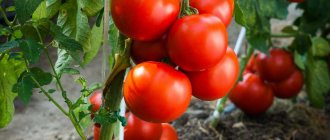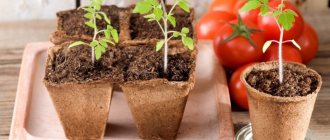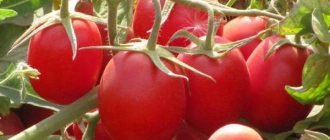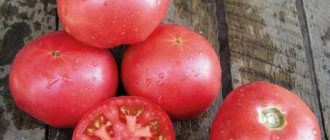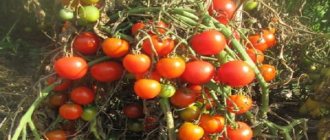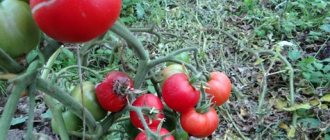- 39735
- tomatoes self-pollinating tomatoes
Tomatoes are self-pollinating plants, that is, one flower contains both male and female organs, which simplifies their pollination when grown indoors or in a greenhouse, since they do not require pollinating insects.
During self-pollination, pollen from the anthers of the stamens lands on the stigma of a pistil of the same color or neighboring ones.
But at the same time, it is better to help tomatoes with pollination so that more ovaries are formed, and, accordingly, more fruits.
In order to improve the pollination process, there are two main ways:
1. Artificial pollination is usually used when pollination by insects or wind is not possible, for example, in closed greenhouses or indoors in winter.
Artificial pollination can be carried out in three ways:
- Pollinate by hand using a regular brush or toothbrush. Just touch them to the tomato flowers one by one;
- Using a fan directed at the plants, the air flow created by the fan transfers pollen from one flower to another;
- Shaking: You can shake the plants themselves or their supports and garters.
2. Natural pollination is carried out by insects or wind, so it occurs only in the warm season and in open areas.
In greenhouses and greenhouses, the following methods are used to improve pollination:
- Attracting insects by planting various flowers of honey plants next to tomatoes;
- Ventilation of greenhouses and greenhouses, the wind also helps in pollination.
Pollination is best done in the morning, as pollen ripens at night. Pollinated flowers differ from unpollinated ones by having their petals bent back.
Which early varieties of tomatoes for greenhouses to choose
The earliest greenhouse tomatoes are usually hybrids. These are plants that differ from ordinary tomatoes in their high characteristics: they are more resistant to changes in environmental conditions and are less susceptible to diseases. Early ripening hybrids produce large tomato yields within a hundred days.
It is important to note that hybrid seeds must be purchased every year, since seeds collected from productive tomatoes are unsuitable for replanting.
The earliest tomatoes need to be tied up and pinched. The purpose of the variety can be very different: for canning or salads. Super varieties are distinguished by their beautiful appearance, juiciness, and unforgettable taste.
Varieties of early ripening tomatoes:
- Golden brush. Representative of an indeterminate variety. Fruiting begins 95 days after planting. Plants reach a height of 150 cm. They need to be tied up and pinched. The fruits have a small, pear-shaped shape, golden yellow color, dense structure and sweet taste. They have a universal purpose.
- Mandarin duck. Representative of an indeterminate variety. It begins to bear fruit at 90-100 days. The plants grow rapidly in height, so they definitely require staking. He also needs to be stepsoned. The fruits are orange in color and have a pleasant taste.
- Poznan. Representative of an indeterminate variety. The plant begins to bear fruit on the hundredth day after planting. It is recommended to form it into one stem. Adult tomatoes need to be pinched and tied up.
- Sweet bunch. The indeterminate variety is formed into two stems, necessarily tied and pinched. Tomatoes are particularly resistant to adverse conditions.
Tomato seeds of early varieties are sown twenty days earlier than the main planting of seedlings in the ground. It is better to plant seedlings in prepared and fertilized soil. It is important to remember that tomatoes cannot be planted in soil where tomatoes or cucumbers previously grew.
Also, when planting, it is important to maintain the optimal distance between tomatoes. Read about this:
Semi-determinate varieties
Before you start growing such tomatoes, you need to study the most famous varieties of tomatoes for greenhouses.
Magnus
A productive variety that was bred by breeders from Holland. The first fruits ripen within 80-90 days. The bush of the plant is quite tall, as it grows up to one and a half meters. Because of this, Magnus needs to stake the bushes so that they do not break under the load of fruit. This procedure should be carried out when the plant grows to 80 cm. It is also necessary to regularly remove excess shoots from the bushes.
The tomatoes of this variety are not very large, as their weight reaches only 100-200 grams. They are formed in brushes of 4-6 pieces. The fruits are colored red and have a round shape with slight ribbing on the edges. They are quite juicy and meaty, so they are used for making tomatoes and juice.
Khlynovsky
This hybrid is mid-early, which means that the first tomatoes begin to ripen three and a half months after planting. Khlynovsky differs from many varieties in the height of its bushes. On average, plants grow up to 200 cm. Because of this, the bushes need pinching and staking.
After full ripening, the green fruits turn bright red. They have a round shape that is slightly flattened. Tomatoes are not very large, as their weight is only 180-190 grams. However, if you grow them in southern regions with a warm climate, their weight can increase to 300 grams.
If you grow this tomato in a greenhouse with ideal conditions, you can get quite a large number of fruits. On average, you can harvest 5-8 kilograms of tomatoes from one bush.
Baron
The Baron variety is an early-ripening hybrid, the fruits of which are fully ripe within one hundred days. Tomato bushes are medium-sized and grow only up to 80 cm. Over time, the first brush appears on them. It is located under leaves 6-8.
The fruits of the plant are quite small and weigh about 150-180 grams. They have very fleshy and dense flesh with a sweetish taste. Tomatoes are stored for a very long time, so they can be transported over long distances. Due to their compact size, they can be used to create barrel pickles and preservation. They also go perfectly with many vegetables and are therefore often used when preparing vegetable dishes and salads.
Yvette
It is one of the earliest varieties of semi-determinate tomatoes. Literally 50 days after planting, you can start collecting fruits. Yvette tomato bushes are not very large, they grow up to 50-70 cm. Yvette and other varieties of tomatoes for greenhouses and greenhouses do not need to be tied up. To get large fruits, you will have to engage in pinching and forming bushes. It is recommended to form Yvette into one or two stems.
Over time, dense red fruits begin to form on the bushes. Their average weight is 120-140 grams. However, larger tomatoes may form on the first bushes. They have good transportability and excellent presentation. They are also resistant to tobacco mosaic and nematode.
Red Arrow
Red Arrow tomatoes are shade-tolerant tomatoes, so they can be planted more densely. The fruits begin to ripen one hundred days after the seedlings are planted in the ground. The height of the bushes is quite large and amounts to one and a half meters, which is why they have to be tied up and trimmed regularly.
To get a good harvest, you will have to periodically feed the plant. This is done using a mixture prepared from boric acid and potassium permanganate. In addition, it is necessary to loosen the soil and water it during the growing season. With proper care of the bushes, you can achieve a fruit weight of 150 grams. The fruits of the Red Arrow are very juicy and fleshy. They are used in cooking for preparing vegetable dishes and salads.
Self-pollinating early varieties of tomatoes for the greenhouse
Today there are a large number of manufacturers on the market who offer early self-pollinating tomato varieties to consumers. When buying seeds, many summer residents pay attention only to the picture on the package. It often happens that tomatoes grow completely different from what was depicted.
When buying seeds, it is important to pay attention to the name of the manufacturer, its reputation and reviews about it.
When purchasing, it is also important to familiarize yourself with the characteristics of the variety, the characteristics of its growth in certain climatic zones. Fruitful varieties are usually resistant to changes in temperature and humidity in the air and soil. When purchasing, it is also important to pay attention to the purpose of the variety: tomatoes can be grown exclusively for sale, salads or canning.
What you need to know about self-pollinating tomatoes:
- Type of bush. Tall bushes, reaching two meters, are distinguished by a long fruiting period and high quality fruits. If low-growing bushes require little space, then self-pollinating bushes should be planted at intervals of 2-3 seedlings per square meter. A tall stem must be formed by removing excess stepsons.
- Tomatoes reach large sizes. These tomatoes are distinguished by their juiciness and sweet taste. The most famous: “Monomakh’s Hat”, “Mikado”, “World Record Holder”, “Chernomor”.
- Ripening time. Self-pollinating tomato varieties can produce a harvest 20 or 30 days earlier than conventional tomato varieties.
- Taste. Tomatoes can have a variety of tastes: sweet or sour.
When buying tomatoes, it is important to pay attention to their purpose. If there is no specific purpose for growing, you can choose universal varieties that are suitable for canning and eating fresh. It is best to give preference to hybrid varieties, as they best resist various diseases.
You can learn about what diseases tomatoes are susceptible to in a greenhouse and how to treat them from the material:
Long-fruited tomatoes
Varieties of long-fruited tomatoes are the result of one of the relatively new areas of breeding.
Tomato variety 'Green Sausage'
A unique productive variety of green-fruited tomatoes for cultivation in open ground and greenhouses.
Tomato variety 'Green Sausage' photo from sadik45.ru
The plants are medium-sized, reaching a height of 1.2-1.4 m. The fruits are elongated in shape, reminiscent of a sausage, grow to about 10 cm in length, and weigh about 100-150 grams. At maturity, the fruits are green, with yellow streaks; spicy to taste, ideal for both fresh consumption and pickling and canning.
Tomato variety 'Orange glasses from Minusinsk'
A variety of medium-early, long-fruited tomatoes with a very unusual name is intended for cultivation in open ground and greenhouses.
Tomato variety 'Orange glasses from Minusinsk' photo from sadik45.ru
Indeterminate, reaches a height of 2 m or more. The elongated orange fruits weighing about 100-300 grams are distinguished by their fleshy, sweet pulp.
Tomato variety 'Korean long-fruited'
An unusually beautiful variety for growing in greenhouses and open ground.
Tomato variety 'Korean long-fruited' photo site dachnaya-zhizn.ru
Plants reach a height of 160-180 cm, the fruits have a rather unusual elongated cylindrical shape, with a gracefully curved tip. The pulp is dense, rich raspberry-pink in color, the weight reaches 200-250, and sometimes 400 grams.
Tomato variety 'Auria'
Original mid-season variety.
Tomato variety Auria photo site www.seeds.net
The bushes are tall (up to 180 cm) and need staking. The fruits are elongated-plum-shaped, 11-15 cm long and weighing 200-250 g, with a rich bright red color when ripe. A distinctive feature of the fruits of the Auria variety is their shape - they seem to be forked at the top.
Tomato variety 'Roma'
'Roma' is a high-yielding mid-season variety of long-fruited tomatoes, which takes about 115-120 days from emergence to fruiting.
Tomato variety 'Roma' photo site tomatland.ru
The variety is intended for cultivation in open ground and under film covers. Determinate plants of the variety reach a height of 0.6-0.8 m. Elongated fruits, shaped like plums, weigh about 60-80 grams. Plants of this variety easily tolerate long-term transportation and are ideal for pickling and canning. The variety is resistant to fusarium and verticillium.
Tomato variety 'American long-fruited'
A high-yielding late-ripening variety intended for cultivation in greenhouses.
Variety 'American long-fruited' photo from www.bloomingarden.ru
Powerful plants of the variety grow up to 2 m high. Red fleshy fruits, about 15-20 cm long and weighing 350-400 grams, are distinguished by high taste. The variety is disease-resistant and high-yielding.
Tomato variety 'Scarlet Candles'
A productive mid-season variety for greenhouses and film shelters.
Variety 'Scarlet Candles' photo site kakdacha.ru
Indeterminate, powerful bushes reach a height of 1.8 m. Narrow cylindrical fruits weighing 60-100 g are collected in clusters. At the ripe stage they are bright pink, the flesh is sugary and sweetish in taste. One of the valuable qualities of the variety is its ability to form an ovary in unfavorable conditions.
Tomato variety 'Firewood'
'Drova' is a high-yielding variety of early ripening: about 90-110 days pass from the emergence of seedlings to the start of fruiting.
Variety 'Firewood' photo site treespk.ru
Determinate (30-40 cm), cultivated in open ground and indoor conditions. When grown in a greenhouse, the bushes reach a height of 50-60 cm. The red fruits are forked at the end, approximately 10-12 cm long, weighing about 80 grams. Dense, low-seeded tomatoes are ideal for canning.
Tomato variety 'Mother's Sibiryak'
Mid-season variety: about 111-115 days pass from the emergence of seedlings to the start of fruiting. Designed for cultivation in open ground.
Variety 'Mother's Sibiryak' photo site happyseeds.ru
Determinate, can reach 1-1.5 m in height. The fruit is cylindrical, elongated, slightly ribbed, intense red when technically ripe, without spots or cracks; the weight is often 63-150 g, but there are specimens weighing about 230 g. Thanks to its dense, meaty structure and spicy taste, it is ideal for preparing salads, pickles and canning.
Super early varieties of tomatoes for greenhouses
Growing tomatoes in the climatic conditions of the middle zone is a rather complex process. It is better to grow tomatoes in a greenhouse, where the plants will be protected from sudden changes in temperature and moisture. The speed of ripening directly depends on the variety of tomatoes.
The best super early varieties of tomatoes include: “Typhoon”, “Hurricane”, “Samara”, “Junior”, “Ilyich”, “Verlioka”.
Material about early varieties of tomatoes for greenhouses will also be useful:
The taste of tomatoes does not depend on when the plants begin to bear fruit. But when purchasing, it is important to read the characteristics of the variety, its features, advantages and disadvantages. It happens that the most productive tomatoes may have less valuable taste. The choice of variety depends on the personal preferences of the person who grows them.
Super early varieties:
- "Sanka";
- "Bells of Russia";
- "Diva F1";
- "Little Red Riding Hood";
- "Mystery";
- "Leningrad chill."
Modern producers offer consumers a wide selection of early ripening varieties. Sometimes choosing the right one can be quite difficult. Before purchasing and planting a variety, experts advise familiarizing yourself with its characteristics and reviews about it.
Self-pollinating tomatoes
Tomatoes are self-pollinating plants, that is, one flower contains both male and female organs, which simplifies their pollination when grown indoors or in a greenhouse, since they do not require pollinating insects.
During self-pollination, pollen from the anthers of the stamens lands on the stigma of a pistil of the same color or neighboring ones.
But at the same time, it is better to help tomatoes with pollination so that more ovaries are formed, and, accordingly, more fruits.
In order to improve the pollination process, there are two main ways:
1. Artificial pollination is usually used when pollination by insects or wind is not possible, for example, in closed greenhouses or indoors in winter.
Artificial pollination can be carried out in three ways:
- Pollinate by hand using a regular brush or toothbrush. Just touch them to the tomato flowers one by one;
- Using a fan directed at the plants, the air flow created by the fan transfers pollen from one flower to another;
- Shaking: You can shake the plants themselves or their supports and garters.
2. Natural pollination is carried out by insects or wind, so it occurs only in the warm season and in open areas.
In greenhouses and greenhouses, the following methods are used to improve pollination:
- Attracting insects by planting various flowers of honey plants next to tomatoes;
- Ventilation of greenhouses and greenhouses, the wind also helps in pollination.
Pollination is best done in the morning, as pollen ripens at night. Pollinated flowers differ from unpollinated ones by having their petals bent back.
How to choose a variety of self-pollinating tomatoes for a greenhouse?
It is better to choose self-pollinating tomato seeds based on the following tomato qualities:
- Resistance to various bacteriological and fungal diseases;
- High yield;
- Purpose of using fruits: for salads, canning or sale;
- Good taste.
At the same time, it is better to buy seeds in trusted stores in packages from well-known companies.
The best varieties of self-pollinating tomatoes for the greenhouse
All available varieties can be divided into the following groups:
By bush type:
1. Indeterminate. Almost all of them are medium or large-fruited. They grow indefinitely, they need to form a bush. The harvest is harvested almost until winter, in heated greenhouses even in winter:
- Mushroom basket,
- Pink king
- Donna Rosa,
- Scarlet Mustang,
- De Barao,
- Honey saved,
- Intuition,
- Midas.
2. Semi-determinate: Anyuta, Japanese crab, Simona, are resistant to any weather conditions and give a good harvest.
3. Determinant. The fruits rarely suffer from late blight and are early ripening. All varieties are low-growing, so if they are planted along the edge, they will not affect the light in any way:
By fruit size
1. Large-fruited (weight of one tomato up to 600 g). The fruits are sweetish and juicy:
- Chernomor,
- A gardener's dream
- Russian soul,
- Mikado,
- Gift,
- Cardinal,
- Monomakh's hat,
- Queen of the market.
2. Medium-fruited (from 100 to 200 g):
- Peter I,
- Slavic masterpiece,
- Diamond,
- Aladdin's lamp.
3. Pickling (small-fruited, up to 60 g). The fruits are small, uniform, with thick skin, making them ideal for canning.
- Sugar plum,
- Caspar,
- Legend Tarasenko,
- Picket,
- Cherry,
- honey drop,
- Italy,
- Kubyshka,
- Moneymaker,
- Truffle,
- Slivovka,
- Ventura.
4. Cherry tomatoes:
- Gold bead F1,
- Cherry tomato F1,
- Mariska F1.
According to ripening time
1. Early ripening or early ripening (90-110 days pass from planting seeds to fruiting):
- Semko-98 F1,
- Typhoon,
- Semko-Sinbad F1,
- Search,
- Dina,
- Friend F1,
- Ilyich F1,
- Verlioka et al.
2. Ultra-early ripening (ripening period from seed planting is 85-96 days). Tomatoes are round, smooth, with a pleasant taste:
- The joy of summer
- Snow fairy tale,
- Bear in the north,
- Amber.
4. Late-ripening (120-145 days pass from planting seeds to ripening of fruits): Persimmon, Black Prince, Pink Giant, De Barao.
By yield
- High-yielding varieties: Biysk rose, Bear's paw, Khlebosolnye. Tomatoes, smooth, have high keeping quality.
- Tomato varieties that retain the qualities of the variety and are characterized by high productivity: Soyuz 3 and 8, Druzhok, Yarilo, Blagovest, Gina.
By shelf life
Tomatoes with a high shelf life:
- Salahaddin F1,
- Akatui,
- Volgogradets,
- Krasnobay F1,
- Ivanovets F1,
- Salahaddin F
They have high shelf life, remain beautiful in appearance for a long time and are ideal for transportation and sale. But their taste is low.
In relation to environmental factors
1. Varieties resistant to microbial and fungal pests. All are F1 hybrids:
2. Varieties resistant to frost and harsh climate conditions: Olya, Verlioka, Ural.
Growing self-pollinating varieties
All tomatoes are self-pollinating. Features of their cultivation in greenhouses are as follows:
- Provide vents for ventilation and, accordingly, pollination;
- Carry out pollination by hand as described above.
Caring for self-pollinating tomatoes
Care includes all usual procedures:
- Abundant but infrequent watering;
- Fertilizer feeding;
Pruning, if required depending on the tomato variety.
The best early varieties of tomatoes for greenhouses
All gardeners dream of a rich harvest, but not many adhere to the rules that will help grow tomatoes so that they produce a rich and high-quality harvest. Today, there are hybrids on the market that are widely popular due to their unpretentiousness and sustainability. These varieties produce excellent tomatoes, the distinguishing features of which are their large size and excellent taste.
It is important to note that hybrid varieties also differ from each other. For example, bushes can be shaped differently. On how to form a tomato bush in a greenhouse:
One variety can produce tall bushes that require grazing and staking. Standard varieties are low-growing bushes that produce a rich harvest. The choice of variety depends on the purpose for which the greenhouse owner grows tomatoes.
The best varieties:
- "Agatha";
- "Explosion";
- "White filling";
- "Lady fingers".
Fruiting of early ripening tomatoes can be short or long. When purchasing, it is important to read the description of the variety, and not look at the picture on the cover. It should be remembered that the growth and fruiting of tomatoes is largely influenced by external factors. That is why the greenhouse should be equipped according to all the rules.
It is also important to consider the compatibility of vegetable crops when planting in a greenhouse. Read about this:
In our country, growing early-ripening varieties of tomatoes is a profitable and profitable business. Tomatoes can be grown for sale or for personal consumption. Early ripening varieties produce a harvest already eighty to one hundred days from the time of sowing. To ensure a high-quality and abundant harvest, tomatoes need to be properly cared for.
- Author: admin
Rate this article:
- 5
- 4
- 3
- 2
- 1
(2 votes, average: 5 out of 5)
Share with your friends!
Diseases and yield
The yield criterion when choosing seeds for a greenhouse is of indirect importance, since the size and quality of the harvest depends not so much on the varietal characteristics, but on the weather and agricultural technology. However, there are seeds of tomato varieties that show resistance to adverse weather conditions and set fruit well even with flaws in care.
According to popular ratings, these are tomatoes:
- Demidov;
- Eagle beak;
- Oak;
- Tatiana;
- Orange miracle;
- Verlioka;
- Buddy;
- Legend;
- Sanka.
Demidov - bushes are low-growing, weakly branched, when the stepsons are removed, they independently form into two branches, and have a growth stop point. Tomatoes grow well in low light conditions, do not stretch, and do not stop growing. To extend the fruiting period, it is necessary to leave the upper stepsons. The harvest is given in unison, the fruits are larger than average, but there are not many on the bush.
Eagle's beak is a self-pollinating hybrid, tall, with large, curved drop-shaped, pink fruits. The first tomatoes reach 750 g in weight. The second wave of tomatoes ranges from 400-600 g. Eagle beak is good because, with excellent taste, it sets fruit in any, even very cold, summer. Breeders recommend seeds of this variety for growing in greenhouses in the northern regions.
Tatyana is a medium-vigorous tomato with fairly large fruits of regular shape. The bushes are neat but powerful. The seeds are recommended for beginners as tomatoes will grow with little care. They are well suited for growing in greenhouses in the country when it is not possible to be on the site every day.
Verlioka is a popular hybrid that is loved for its unpretentiousness. It is declared as seeds of medium vigor, but in a greenhouse the bush grows up to 2 m. The fruits are regular round in shape, smooth, weighing 100-80 g. They ripen simultaneously, simultaneously along the entire fruit branch. There are from 6 to 10 tomatoes in one brush. The variety is characterized by high yield and resistance to viral diseases. However, gardeners note a watery and sour taste.
